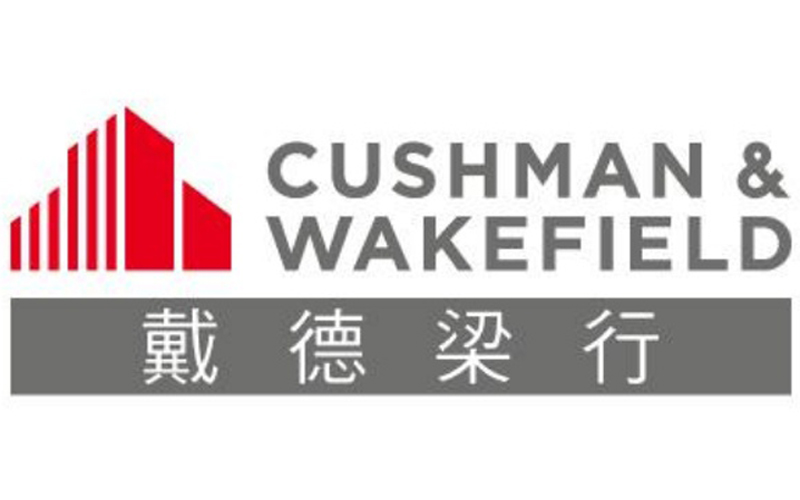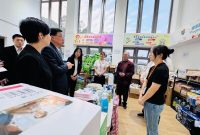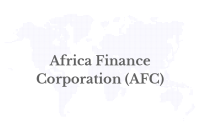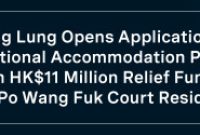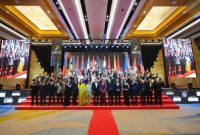- Residential Market: Home prices remain on track to suffer a drop of about 10% for the whole of 2020. The market is expected to stabilize in the second quarter of 2021.
- Investment Market: Number of transactions and investment volume in 2020 are expected to drop to a 10-year new low. In 2021, however, the total number of non-residential transactions is forecasted to rebound to a level exceeding that of 2019.
- Office Market: Office demand remained weak in Q4, pulling net absorption YTD down to -2 million sq.ft., the worst on record.
- Retail Market: While retail rental declines showed signs of slowing in Q4, they are expected to remain under pressure through 1H 2021; An emerging trend in F&B of food hall concepts is expected to grow in the near term.
HONG KONG SAR – 9 December 2020 – 2020 has undoubtedly been one of the most challenging years for Hong Kong in recent decades. The property market, as one of the key economic pillars of Hong Kong, has been hard-hit at multiple levels. Although the outlook remains gloomy, there are early signs of recovery towards Q2 or Q3 2021 once a vaccine becomes available and if various sectors are able to embrace new and flexible strategies to grow.
The Residential Market:
Mr Alva To, Cushman & Wakefield’s Vice President, Greater China & Head of Consulting, Greater China, commented, “The first-hand market remained strong in Q4, mainly due to strong pent-up demand and favorable mortgage benefits. On the other hand, the second-hand and luxury markets continued to suffer as a result of economic weakness caused by the pandemic. As the economy remains weak, we forecast the residential market to remain under pressure for the remainder of 2020 and into Q1 2021. Though much depends on the course of the pandemic and the timing of a vaccine, the market is expected to begin to stabilize in Q2 2021 at the earliest.”
Property transaction volumes in terms of Sales and Purchase Agreements (S&Ps) in 2020 fell to the second lowest level in the past decade, recorded only 73,253 YTD. The decline was largely driven by a drop-off in non-residential transactions, which fell to the lowest level in a decade, and even lower than during SARS.
Residential S&Ps were down by 3%
q-o-q with the expectation that they will continue to edge lower in December as the city is hit by a fourth wave of COVID-19 cases. Among residential segments, the impact on the mass market was relatively mild, with prices at City One and Taikoo Shing down by 5.4% and 12.6% y-o-y respectively.
The impact on the luxury residential segment was more severe as some estates have suffered from a decline in mainland Chinese demand during the pandemic. Prices at Residence Bel-Air (Phase 2) fell by 10.8% in 2020 while those in the Harbourside plummeted by nearly 25% in the year.
The Investment Market:
The Investment market remained subdued in Q4 2020, capping a challenging year in which the overall real estate investment fell to the lowest level in the past decade. As of today, a total of only 169 major transactions (each with a consideration of over HK$100 million) have been recorded. The commercial property sector was hardest hit in the year with just 60 major transactions recorded, down further from the 89 transactions recorded in 2019.
Mr Tom Ko, Cushman & Wakefield’s Executive Director, Capital Markets in Hong Kong, said, “The commercial property sector was hit the hardest in 2020 with total transactions in in the year down by more than 70% from the recent peak in 2018. Favorable factors including the relaxation of mortgage rates and the abolition of double stamp duty on non-residential properties offered a temporary boost especially for small-scale transactions. The investment market is expected to bottom out in 2021 and the number of non-residential transactions is forecasted to rebound to a level exceeding that of 2019.”
Overall investment volume in Q4 remained at a similar level to Q3, while investment into primary residential remained the most active among all sectors, accounting for almost half of the total transactions. The commercial transaction volume doubled in Q4, but was largely attributable to the en-bloc sale of Cityplaza One in Hong Kong East for HK$9.85B.
The Office Market:
Grade A office rentals extended their declines in Q4 for a seventh consecutive quarter, with the overall average rent in Hong Kong falling 5.5% q-o-q and 18.7% YTD, returning them to their level in Q2 2015. Rents in Prime Central and Greater Central down by 20.9% and 21.3% YTD respectively, while all submarkets continued to come under significant pressure as demand remained weak.
Weak demand pulled net absorption YTD down to -2 million sq.ft., in what was the worst performance on record. Overall availability climbed to 12.1%, the highest level since Q1 2005, as availability in all districts with the exception of Hong Kong East, climbing into double digits in the quarter.
Mr. John Siu, Cushman & Wakefield’s Managing Director, Hong Kong, commented, “Hard hit by the pandemic, 2020 was extremely challenging for companies, and the weakness is likely to extend into 2021 with rents forecast to fall further by as much as 16% and availability climbing to about 14%. Net absorption is forecasted remain in negative territory, ranging from -650,000 to -700,000 sq. ft. as demand is set to remain weak in 2021. Despite the limited new supply scheduled for 2021, the 4.2 million sq. ft. new supply from nine projects planned in 2022 is expected to continue to weigh on rentals. Should the COVID-19 vaccine become available by mid-2021, that should support some recovery in demand.”
Mr. Keith Hemshall, Cushman & Wakefield’s Executive Director & Head of Office Services, Hong Kong, commented, “Office rents will continue their downward trajectory as demand remains weak and availability rises. Large occupiers with leases expiring in 2022/23 will seek to leverage against over four million square feet of new Grade A supply completing in 2022. Decentralization will accelerate as occupiers seek to cut costs and accordingly Landlords in core districts will come under increasing competition to retain existing tenants and backfill vacant space, resulting in increasingly favorable packages being offered. Meanwhile, small occupiers will continue to consider serviced offices as an option to maintain flexibility and avoid upfront capex. The service office sector continues to evolve as Landlords are now entering the market in direct competition with established players.”
The Retail Market:
The retail market continued to be hard-hit by a fourth wave of COVID-19 cases in Hong Kong. Retail sales in the first 10 months of 2020 dropped by 27% y-o-y, led by the decline of jewelry & watches (57.3%) and medicine and cosmetics (51.8%).
Retail sales across most sectors remained weak through October, as sales remained reliant solely on local consumers in the absence of tourist arrivals during the pandemic. Retail sales of daily necessities remained resilient due to social distancing measures, with supermarket sales up 10.3% y-o-y. Vacancy rates across submarkets remained elevated while dipping slightly in Causeway Bay, but it may begin to fall in coming months as some landlords turn to short-term leases to fill spaces.
Mr Kevin Lam, Cushman & Wakefield’s Executive Director, Head of Retail Services, Hong Kong, commented, “The retail market had a tough year in 2020 as one of the sectors hardest hit by COVID-19. We do believe rentals will stabilize in 2H 2021 when tourists are likely to return as a result of effective vaccination. Meanwhile, with flexible leasing package for small tenants with innovative centralized management, we see potential for a growing trend in food halls to support the F&B sector.”


